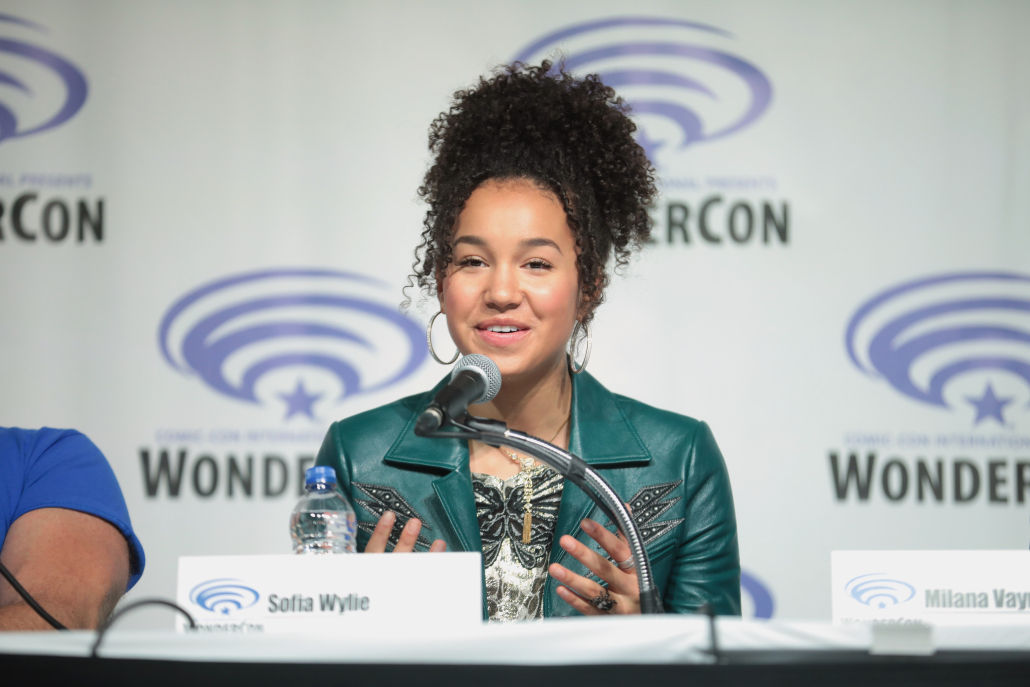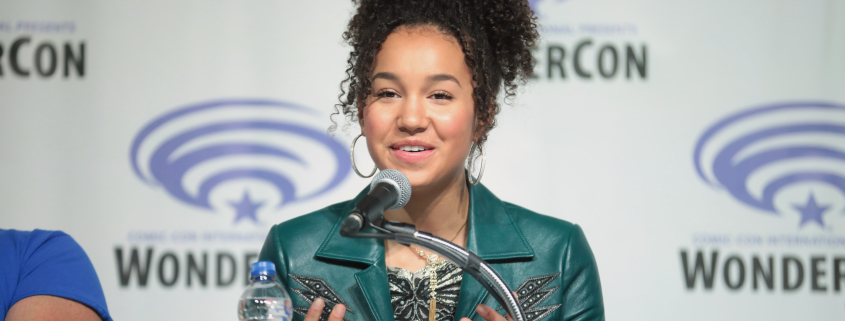‘The School for Good and Evil’ is half-taught

Directed by School of Cinematic Arts alumnus Paul Feig, “The School for Good and Evil” is the film adaptation of Soman Chainani’s beloved book series of the same name. Released by Netflix on Oct. 19, the film is visually stunning with imagery fit for the most glorious fairy tales. Even without reading the books, it’s clear that the worldbuilding is impressively crafted and the concept — with its dynamic themes of friendship and identity — is incredibly original.
“The School for Good and Evil” is the kind of source material uniquely suited for a cinematic adaptation. There’s no doubt Netflix did a spellbinding job of conveying it. With a runtime of a little more than two hours, though, “The School for Good and Evil” drags when it shouldn’t, especially given that there were so many elements that could have been given more nuanced qualities.
Sophie (Sophia Anne Caruso) and Agatha (Sofia Wylie) are two best friends living in the village of Gavaldon. While Sophie is all sunshine, Agatha is her grumpier counterpart. Their opposite natures are what make their friendship so striking. Sophie, however, wishes to leave her mediocre life in Gavaldon and become a princess at the elusive fairy tale School for Good, where students are trained to become the heroes of their own story. As a result of Sophie’s wish, Sophie and Agatha are whisked away to the School for Good and Evil.
To her shock and disgust, Sophie is placed in the School for Evil, led by the blunt Lady Lesso (Charlize Theron). Agatha, on the other hand, is sent to the School for Good, led by the sugary sweet Professor Dovey (Kerry Washington). Both girls struggle to fit in in their respective placements. Sophie fights with the Nevers, students of the School for Evil; Agatha is shunned by the Evers, students of the School for Good. The two are insistent that they have been placed in the wrong schools, believing Sophie should be in the School for Good, while Agatha should be in the School for Evil.
However, in order to be placed where they think they belong, Sophie must secure true love’s kiss. Sophie sets her eyes on the School for Good’s popular Prince Tedros (Jamie Flatters), whom Agatha later also crushes on. At the same time, Sophie’s discontent with being placed in the School for Evil has caused her to bond with the nefarious Rafal (Kit Young), the personification of evil who has come to Sophie seeking Evil’s world domination. Agatha must fight to save her friend from falling deeper into Evil and protect both schools from being destroyed by it.
One issue with the film is that it spends too much time on certain nonessential parts and too little time on other moments that seem like they could be crucial. A major part of the trailer’s appeal is Sophie’s acceptance of being Evil and the shocking transformation — in physical appearance and attitude — that occurs.
However, this part isn’t given too much weight in the actual film, aside from a few dramatic entrances and a montage of Sophie bonding with her fellow Nevers. The thematic exploration of “Evil” being synonymous with being the underdog is a gripping idea, but unfortunately, it is underdeveloped here. That theme becomes superficial, as if empowering oneself is simply attained through a few costume changes.
The transformation could have been more satisfying had there been more scenes of Sophie taking charge of her own situations. As the crux of Sophie’s narrative arc was her desire to not be powerless anymore, there needed to be more stakes involved in her powerlessness. In simple terms, there needed to be a more drastic change in circumstances after her decision to become confident in her classification as Evil.
Other than the immature villagers of the town and Sophie’s own discontent with her annoying family, Sophie’s need to stay at the School seems rooted primarily in her own selfishness (which might be the point of her placement in the School for Evil). While this all makes sense, some information supporting an external need to leave would have presumably contributed to greater audience empathy with Sophie. As she is, Sophie comes across as mostly whiny and annoying, with very little character development aside from a “redemption” moment inconsistent with her behavior for the first three-quarters of the film.
Audiences do get glimpses of why Nevers want to empower themselves given that they are constantly looked down upon by the Evers. Still, the most riveting part of the film should be Sophie’s acceptance of Evil, which falls flat in comparison to the film’s more eloquent explorations of friendship between Sophie and Agatha.
For a story that revolves around questioning what “good” and “evil” really are beyond their one-dimensional caricatures, the film doesn’t ultimately succeed in conveying exactly how students are placed into each school, which appears to be the story’s whole premise.
With the sweeping expanses of both the schools, there is a wonderful dichotomy of good and evil, ambience-wise. Kerry Washington and Charlize Theron channel a lot of energy into their roles as Professor Dovey and Lady Lesso, respectively, and it does feel like they had a lot of fun doing it. Similarly, Sofia Wylie and Sophia Anne Caruso bring a lot of passion to their characters, and the bond between the two is keenly felt.
Still, that doesn’t change the fact that maybe the story would have been better suited for a TV show. There, some character arcs could have received necessary attention with a format of multiple episodes. Had the conflict been drawn out, many elements might have been further developed, and the emotional investment would have been strengthened. For now, the film feels like a lesson that takes up too much time and only covers half the material.

